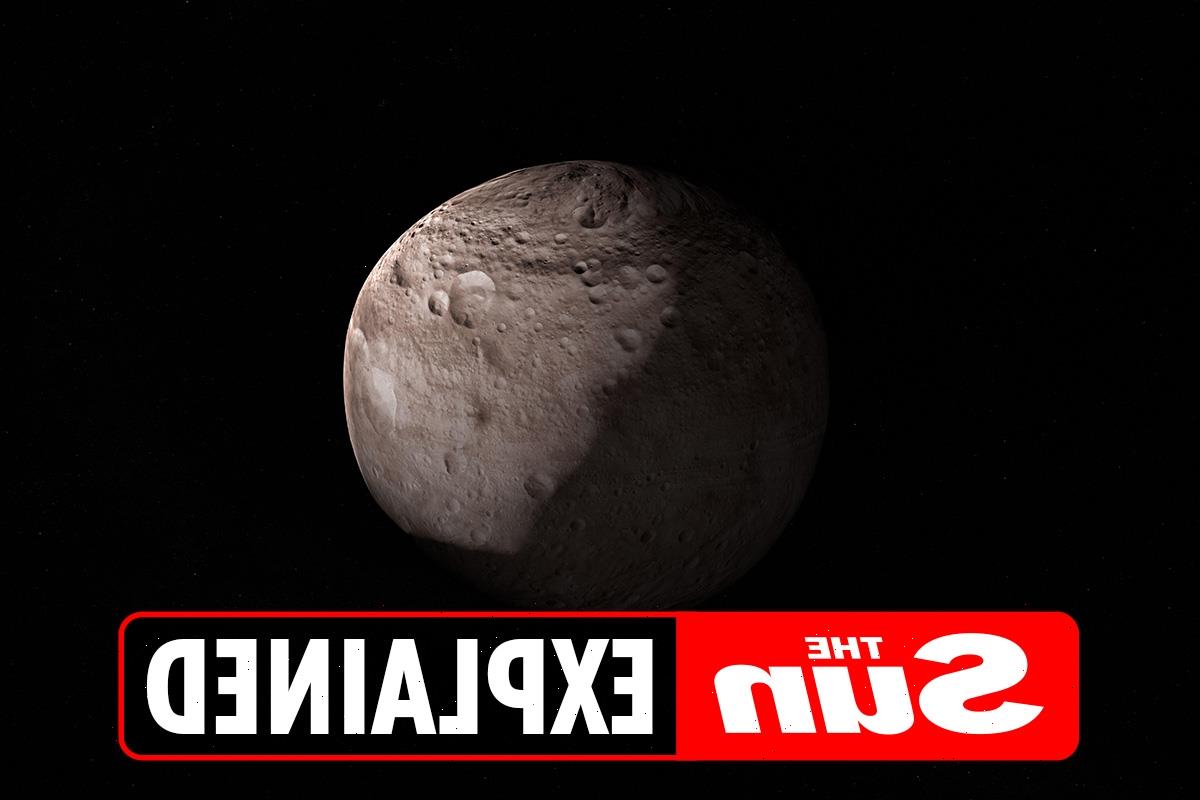NASA scientists have identified more than one million asteroids to date.
The rocky remnants are left over the early formation of our solar system 4.6 billion years ago.
What are the top five biggest asteroids and do they pose a threat to Earth?
Most of the 1,113,527 asteroids orbit the sun between Mars and Jupiter within the main asteroid belt.
They range in size – from a whopping 329 miles (530km) in diameter to a comparatively measly 33 feet (10 metres) across, according to NASA.
Though it is possible that an asteroid could hit Earth one day, the chances are pretty slim as they are so far away.
Astronomers monitor the sky and regularly track asteroids to establish the risk, and we would likely know about an imminent hit years in advance.
A spokesperson for NASA's Jet Propulsion Laboratory said: "NASA knows of no asteroid or comet currently on a collision course with Earth, so the probability of a major collision is quite small.
"In fact, as best as we can tell, no large object is likely to strike the Earth any time in the next several hundred years."
NASA is monitoring an asteroid called Bennu which has a 1/2700 chance of impacting Earth between 2175 and 2195.
But as that is a long time off, here are the top five biggest asteroids.
1. Ceres
The largest object in the asteroid belt between the orbits of Mars and Jupiter is Ceres.
It was the first asteroid discovered in 1801 and was originally deemed a planet.
It was later reclassified as an asteroid in the 1850s, but was reclassified again as a dwarf planet in 2006.
While no longer strictly an asteroid, it takes the number one spot as it measures a whopping 580 miles (940km) in diameter.
Ceres is named after the Roman goddess of corn and harvests – and has the same origin as the word cereal.
It was 1,682 Earth days – or 4.6 years – for Ceres to make one trip around the sun.
And it completes one rotation around its axis every nine hours.
2. Vesta
Vesta is the largest official asteroid in the main asteroid belt, and the second most massive body.
It was discovered by Heinrich Wilhelm Olbers in 1807.
Vesta is about 329 miles (530km) in diameter, accounting for almost nine percent of the total mass of all asteroids.
Spherical in shape, Vesta has separated into crust, mantle and core much like Earth.
3. Pallas
Pallas was named after the Greek goddess of wisdom after it was discovered in 1802.
It measures approximately 318 miles (512km) in diameter and makes up about seven per cent of the total mass of the asteroid belt.
Unlike other asteroids, Pallas' orbit is highly inclined at 34.8 degrees making it relatively inaccessible to study.
4. Hygiea
Hygiea comes in fourth place at 270 miles (434km) across.
It is a major asteroid in the main belt, but it could soon be considered a dwarf planet due to its almost spherical shape.
If becomes such, it will be the smallest dwarf planet in our solar system.
Astronomer Annibale de Gasparis discovered the asteroid in 1849.
Hygiea is not deemed potentially hazardous as its orbit does not bring it close to Earth.
5. Interamnia
Rounding off the list of the biggest asteroids is Interamnia.
The asteroid spans 217.5 miles (350km) in diameter and orbits the sun every 1,950 days – or 5.34 years.
It is not considered viable to explore Interamnia due to its distance from Earth.
What’s the difference between an asteroid, meteor and comet?
- Asteroid: An asteroid is a small rocky body that orbits the Sun. Most are found in the asteroid belt (between Mars and Jupiter) but they can be found anywhere (including in a path that can impact Earth).
- Meteoroid: When two asteroids hit each other, the small chunks that break off are called meteoroids.
- Meteor: If a meteoroid enters the Earth's atmosphere, it begins to vapourise and then becomes a meteor. On Earth, it'll look like a streak of light in the sky, because the rock is burning up.
- Meteorite: If a meteoroid doesn't vapourise completely and survives the trip through Earth's atmosphere, it can land on the Earth. At that point, it becomes a meteorite.
- Comet: Like asteroids, a comet orbits the Sun. However rather than being made mostly of rock, a comet contains lots of ice and gas, which can result in amazing tails forming behind them (thanks to the ice and dust vapourising).
Source: Read Full Article






